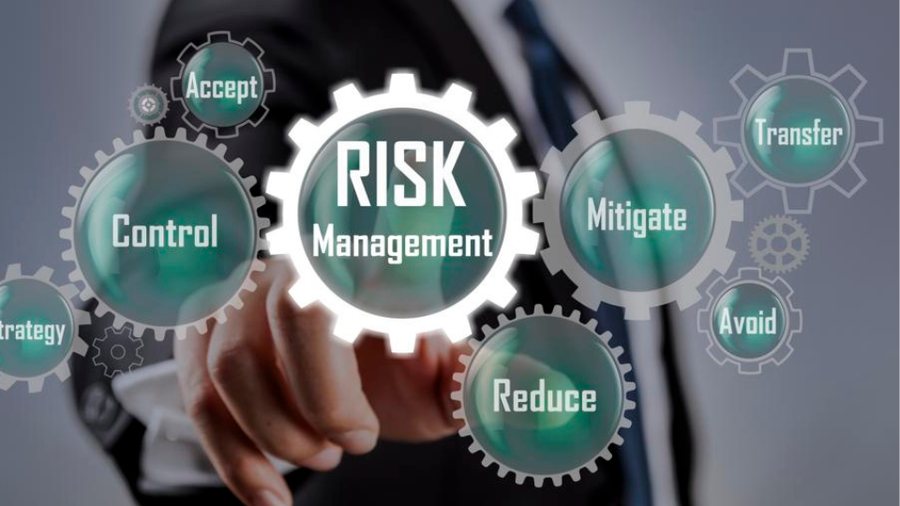Are you ready to navigate the unpredictable waters of business and emerge unscathed? Welcome to the world of Risk Management! In today’s fast-paced and ever-changing environment, implementing effective risk management strategies is crucial for the success and sustainability of any organization. Join us as we dive into the essentials of risk management, from identifying potential risks to creating comprehensive mitigation plans. Let’s empower your business to tackle challenges head-on and proactively steer towards a brighter future!
Understanding Risk Management
Risk management is not merely about avoiding risks but embracing them as opportunities for growth and improvement. It involves assessing, identifying, and addressing potential threats that could impact the achievement of organizational objectives. By understanding risk management, businesses can anticipate challenges and proactively mitigate their impact.
At its core, risk management is a systematic approach to managing uncertainties that may hinder the success of a business. It allows companies to assess internal and external factors affecting operations or strategic goals. Organizations can develop effective strategies to minimize vulnerabilities and capitalize on emerging opportunities by taking a holistic view of potential risks.
Effective risk management empowers businesses to make informed decisions based on a thorough analysis of potential threats and rewards. It enables proactive planning and resource allocation to navigate uncertainties confidently and resiliently. Embracing risk management is not about fear but rather about seizing control over the future trajectory of your organization.
Identifying Potential Risks
Identifying potential risks is a crucial step in effectively managing them. One way to do this is by conducting a thorough risk assessment across all areas of your business operations. This includes looking at internal factors such as employee turnover or financial instability, as well as external factors like market fluctuations or regulatory changes.
Another method is brainstorming with key stakeholders to uncover any risks that may not be immediately apparent. You can get a comprehensive view of potential threats to your organization by involving various perspectives and expertise.
It’s also essential to stay informed about industry trends and best practices to anticipate emerging risks before they become significant issues. Reviewing and updating your risk register helps keep track of new challenges that may arise in the ever-changing business landscape.
By proactively identifying potential risks, you can better prepare your organization to implement strategies that mitigate their impact and protect against unforeseen circumstances.
Different Types of Risk Management Strategies
When it comes to risk management, there are various strategies that organizations can implement to mitigate potential threats. One common approach is risk avoidance, where the company chooses not to engage in activities that carry significant risks. Another strategy is risk transfer, which involves shifting the responsibility for the risk to a third party through insurance or outsourcing.
Risk reduction focuses on minimizing the likelihood of an adverse event by implementing preventive measures and controls. Risk acceptance is when a company acknowledges the potential risks but decides not to take any specific action against them. Diversification is a strategy that involves spreading out risks across different areas or investments to reduce overall exposure.
Each type of risk management strategy has benefits and considerations depending on the nature of the business and industry requirements. Organizations can effectively safeguard their operations and assets from potential threats by understanding these different approaches.
Creating a Risk Management Plan
Creating a Risk Management Plan is a crucial step in ensuring the success and sustainability of any business or project. Gather key stakeholders to brainstorm potential risks that could impact your objectives. Next, prioritize these risks based on their likelihood and potential impact.
Once you have identified the most critical risks, develop strategies to mitigate or avoid them altogether. This may involve implementing new processes, investing in technology, or securing insurance coverage. Remember to assign responsibilities for each risk mitigation strategy to ensure accountability.
A well-developed Risk Management Plan should also include contingency plans for unforeseen circumstances that may arise. Regularly review and update your plan to adapt to evolving threats and opportunities in your environment.
Creating a comprehensive Risk Management Plan allows you to proactively address challenges before they escalate into costly disruptions or setbacks.
Implementing Risk Assessments and Mitigation Plans
Implementing risk assessments and mitigation plans is crucial for any business to address potential risks proactively. The first step is identifying all possible risks that could impact the organization’s objectives or projects. This involves thoroughly evaluating internal and external factors that may pose a threat.
Once the risks are identified, assessing their likelihood and potential impact on the business is essential. This helps prioritize which risks need immediate attention and allocation of resources for mitigation strategies. Implementing mitigation plans involves developing specific actions to reduce or eliminate the identified risks.
Regularly monitoring and reviewing these plans are necessary to adapt to changing circumstances and ensure effectiveness in managing risks over time. Communication among stakeholders about risk management processes is critical to maintaining organizational transparency and accountability.
Benefits of Effective Risk Management
Effective risk management comes with many benefits that can significantly impact the success of an organization. One key advantage is increased confidence and peace of mind among stakeholders, knowing that potential risks are proactively addressed. This sense of security fosters trust and enhances relationships with clients, investors, and employees.
Moreover, implementing robust risk management practices can lead to improved decision-making processes. By clearly understanding potential risks and mitigation strategies, organizations can make informed choices that align with their objectives while minimizing negative impacts. This proactive approach can also help businesses seize opportunities for growth without fear of unknown risks hindering progress.
Additionally, effective risk management can contribute to cost savings in the long run by reducing the likelihood of costly disruptions or incidents. By identifying and addressing risks early on, companies can avoid unexpected expenses associated with crises, such as legal issues, reputational damage, or operational downtime. This financial prudence strengthens the overall resilience and sustainability of the business in an unpredictable environment.
Prioritizing adequate risk management safeguards against potential threats and fosters a culture of preparedness and adaptability within organizations. By reaping these benefits, companies position themselves for long-term success and sustainable growth amidst evolving market dynamics.
Common Mistakes to Avoid
When it comes to risk management, there are common mistakes that organizations should avoid to ensure the effectiveness of their strategies. One frequent error needs to be addressed when conducting thorough risk assessments. Identifying potential risks is essential for creating a robust risk management plan.
Another mistake is overlooking the importance of regular reviews and updates to the risk management plan. Risks evolve, so it’s crucial to continuously assess and adjust mitigation strategies accordingly. Additionally, failing to involve key stakeholders in the risk management process can lead to oversight of critical areas of concern.
Relying solely on historical data without considering emerging risks can also be a pitfall. It’s vital to anticipate new threats and adapt mitigation plans accordingly. Not having a contingency plan for unexpected events can leave an organization vulnerable during crises.
By removing these common mistakes, businesses can strengthen their risk management practices and enhance their resilience against unforeseen challenges.
Conclusion
Risk management is a crucial aspect of any business operation. Organizations can protect their assets, reputation, and bottom line by understanding potential risks and implementing effective strategies to mitigate them. Identifying risks early on, creating a comprehensive risk management plan, and regularly assessing and updating mitigation strategies are essential steps in ensuring a company’s long-term success.
Effective risk management helps companies avoid financial losses and allows them to capitalize on new opportunities with confidence. By learning from past mistakes and constantly improving risk management practices, businesses can stay ahead of the curve in an ever-changing market landscape.
Remember that no risk management strategy is foolproof, but by staying proactive and vigilant, organizations can successfully minimize the impact of unforeseen events and navigate challenges. Embracing risk as a natural part of doing business while actively managing it will position companies for sustainable growth and resilience in the face of uncertainty.
Incorporating robust risk management practices into your organizational culture will safeguard your interests and foster innovation, agility, and competitiveness in today’s dynamic business environment. Stay informed, stay prepared – because prevention is always better than cure when it comes to managing risks effectively.







